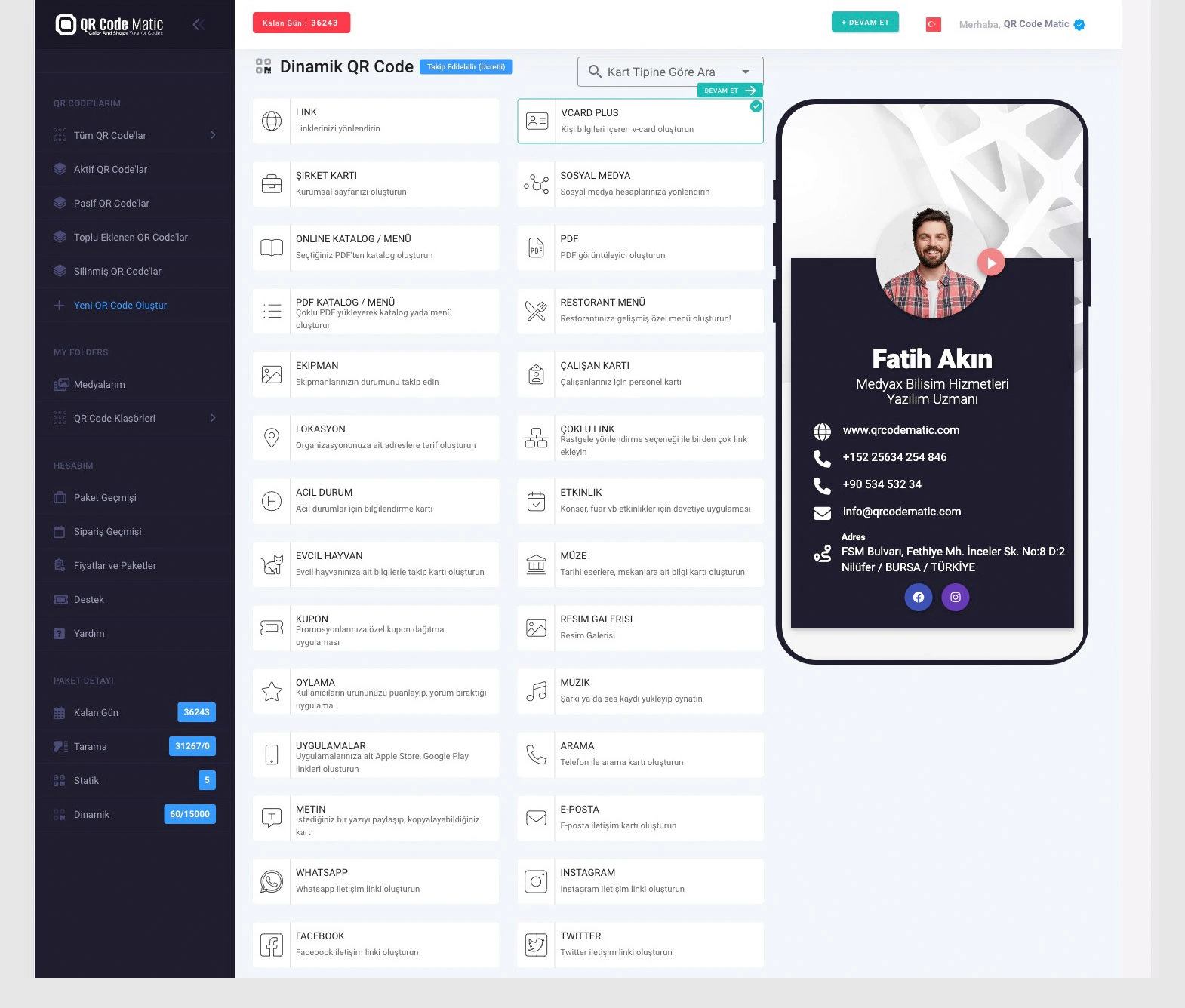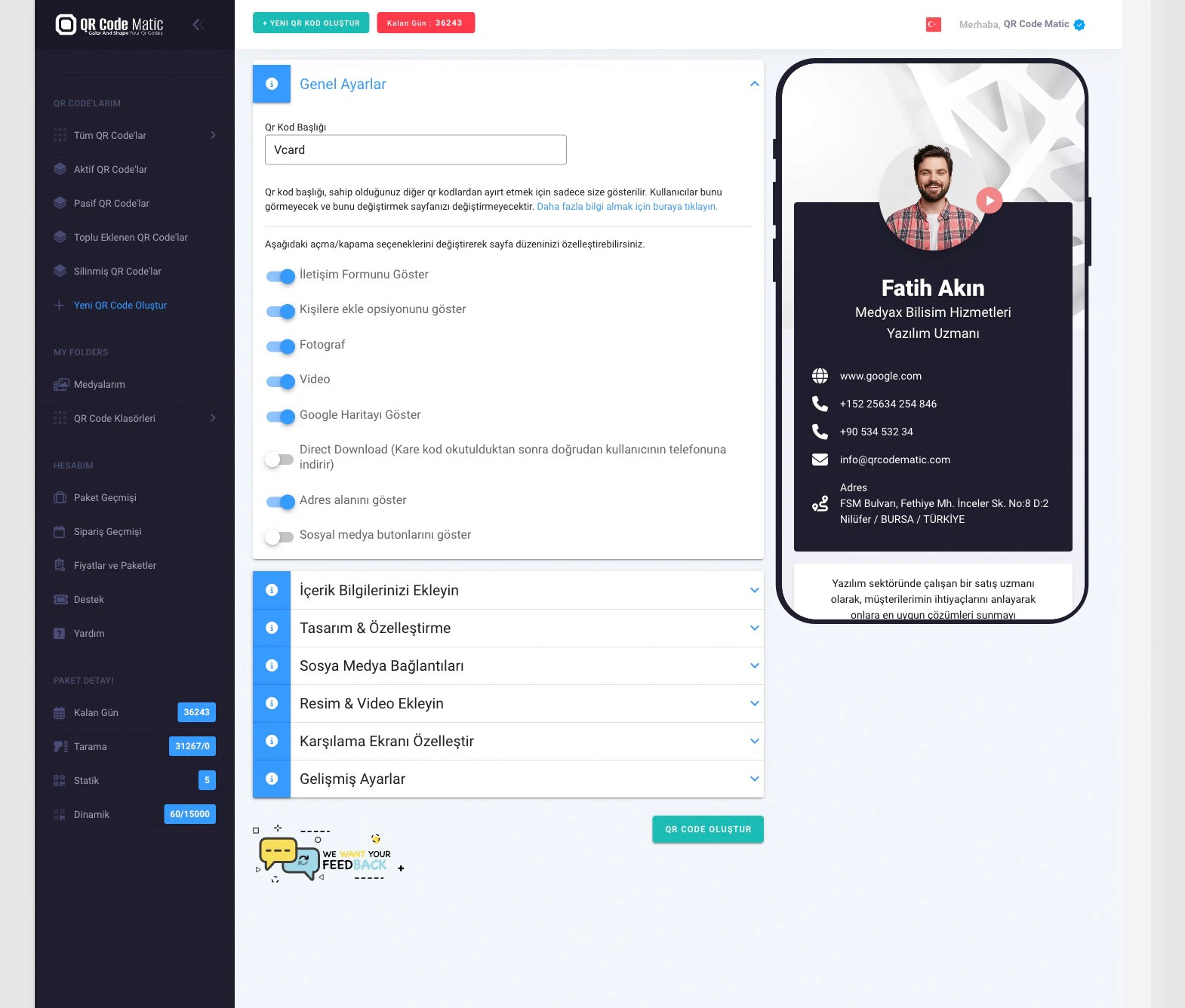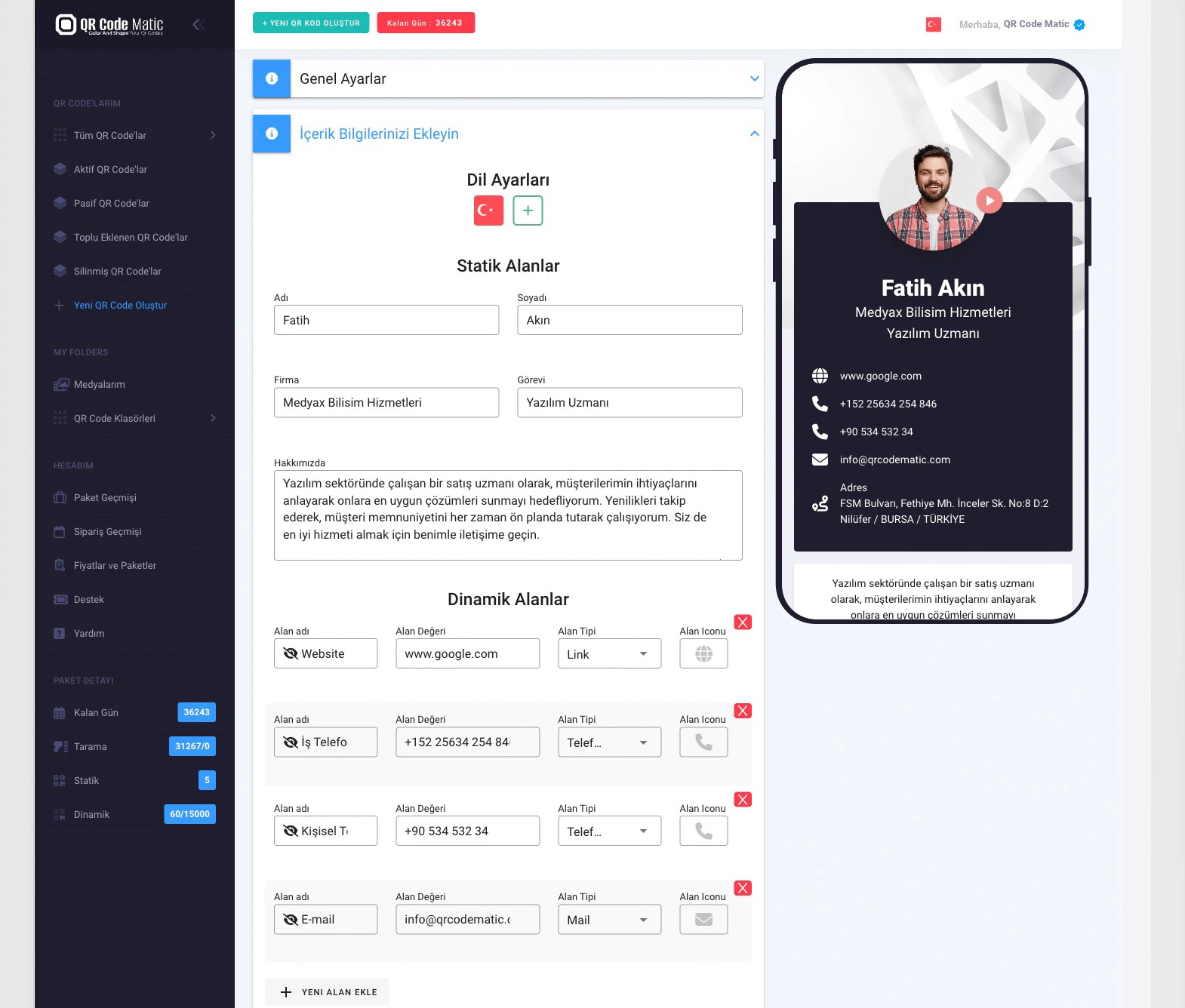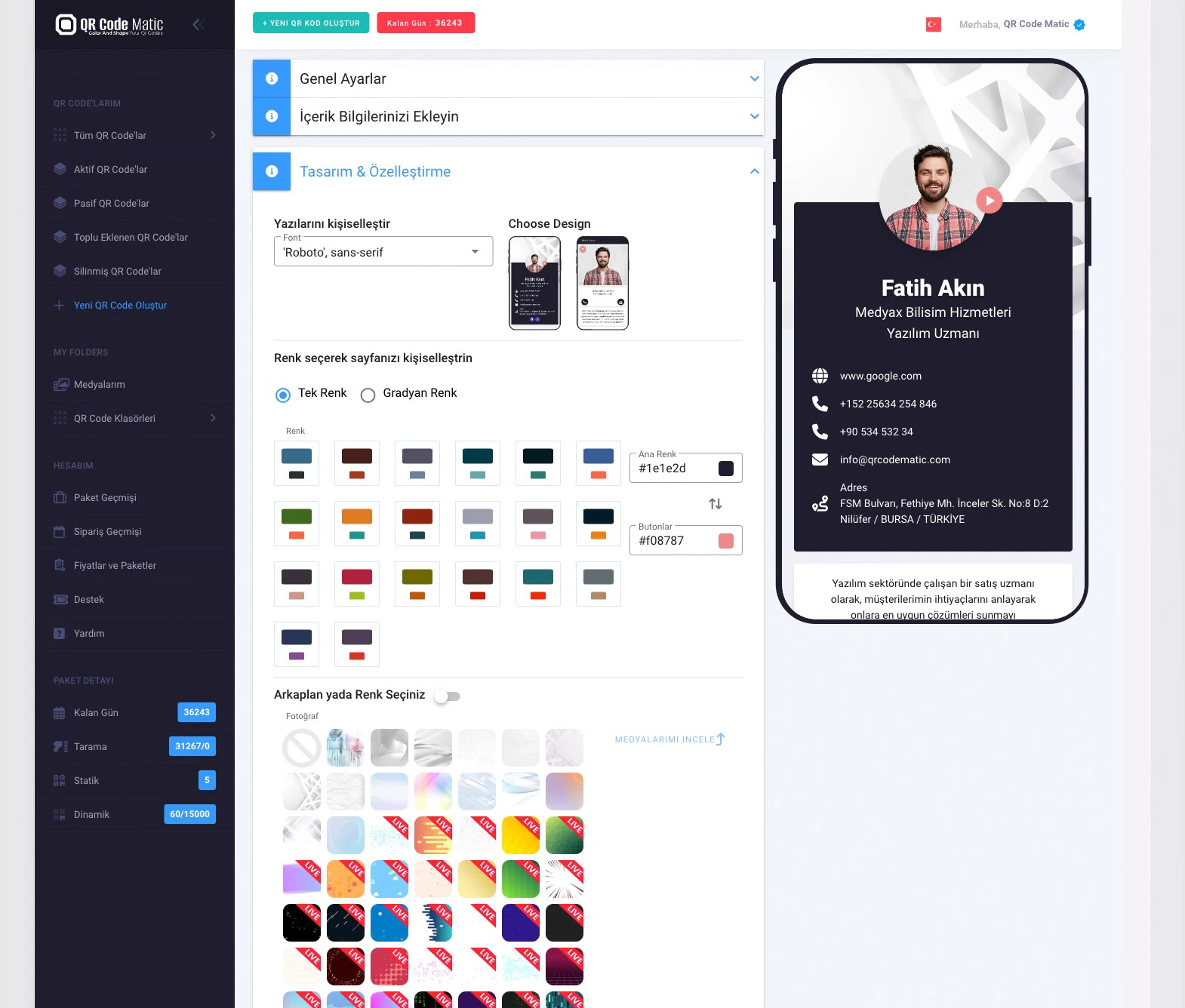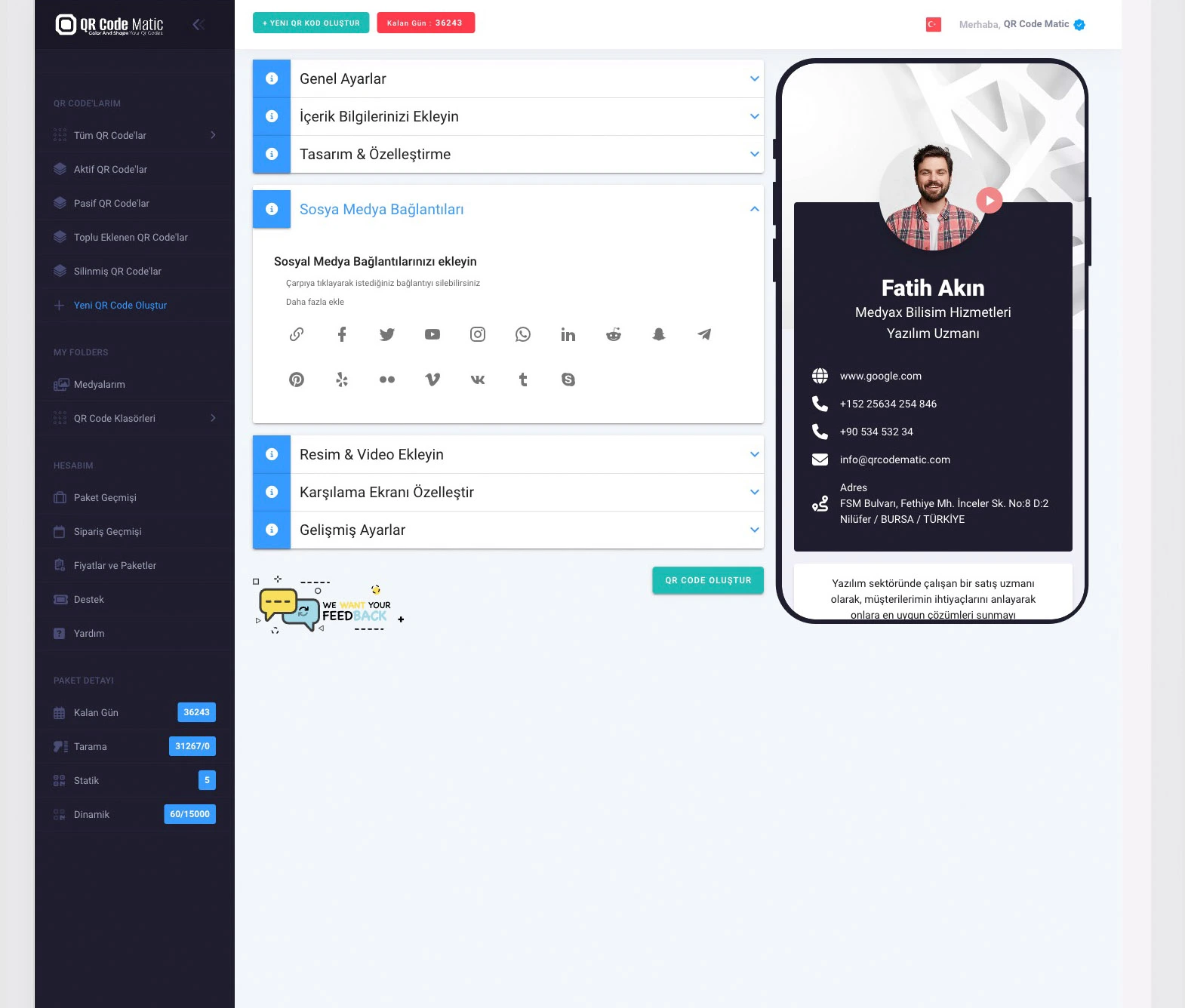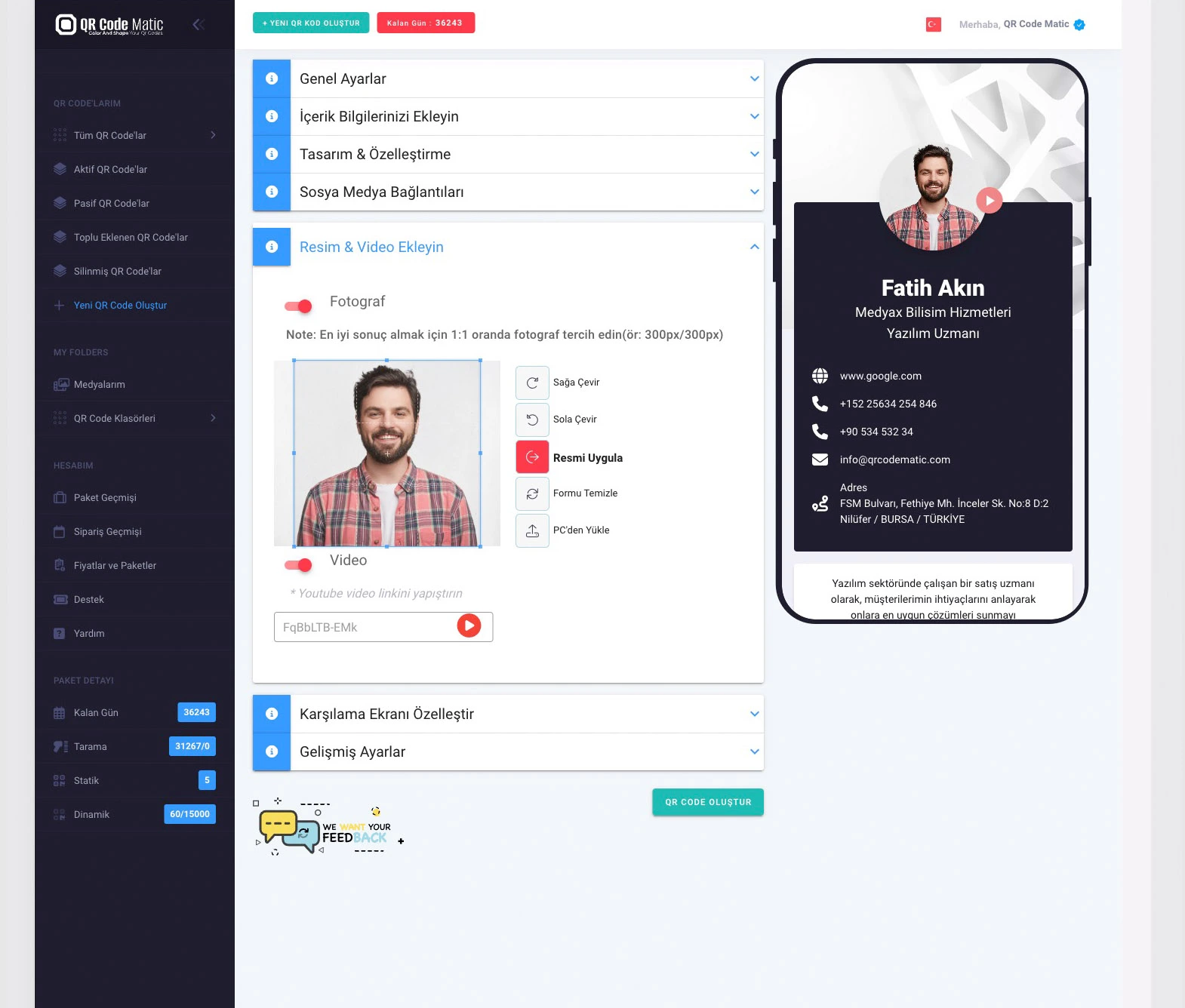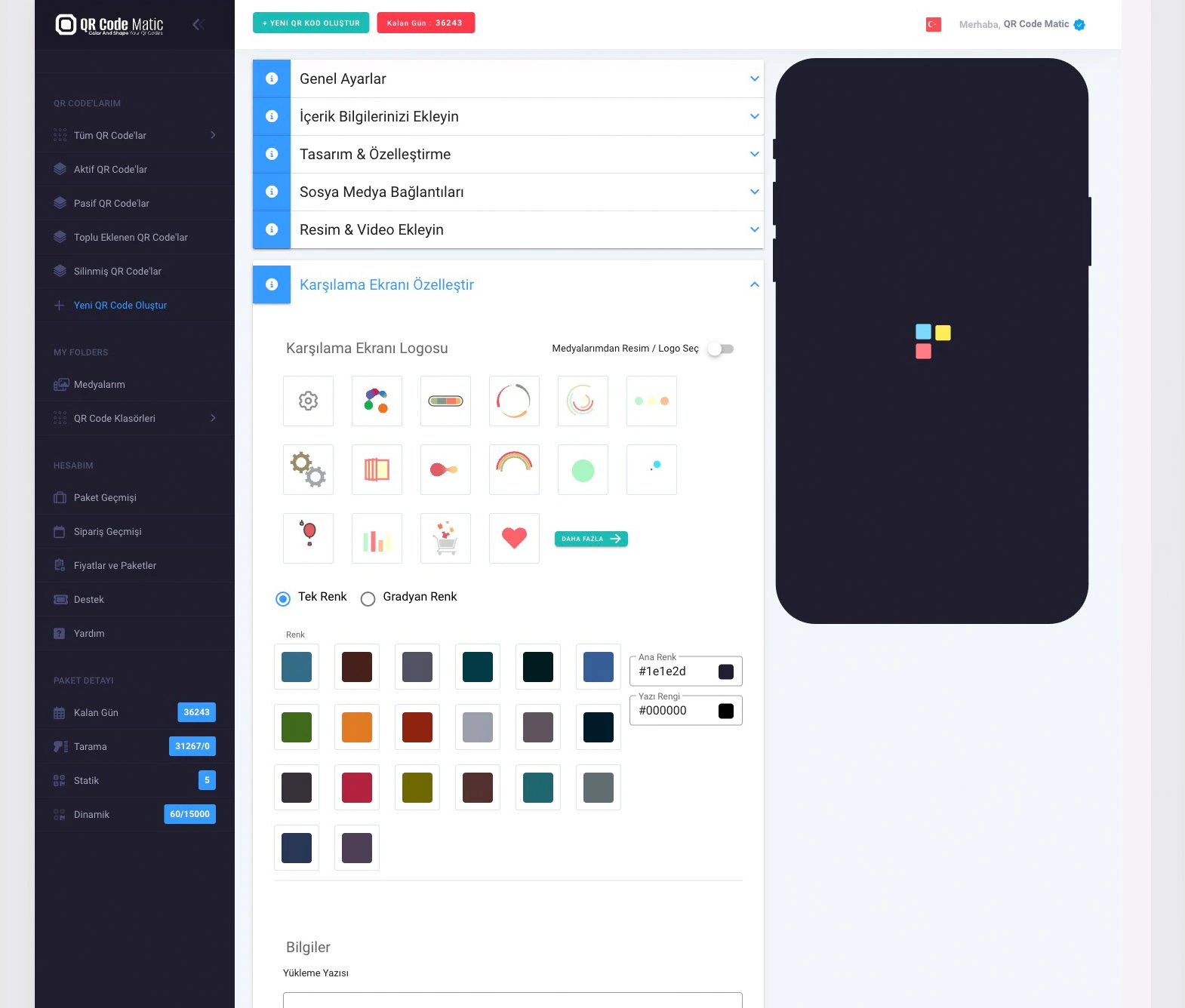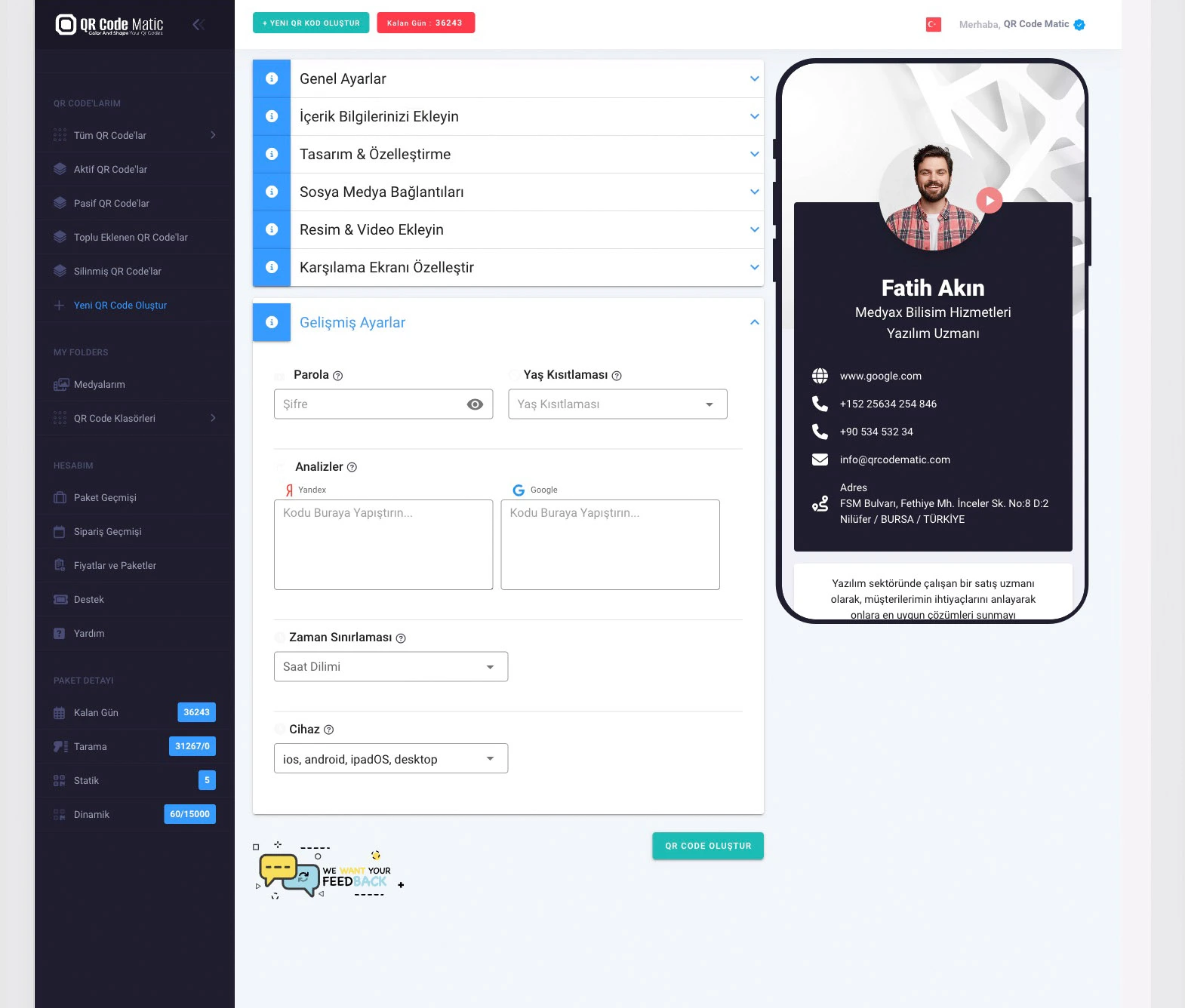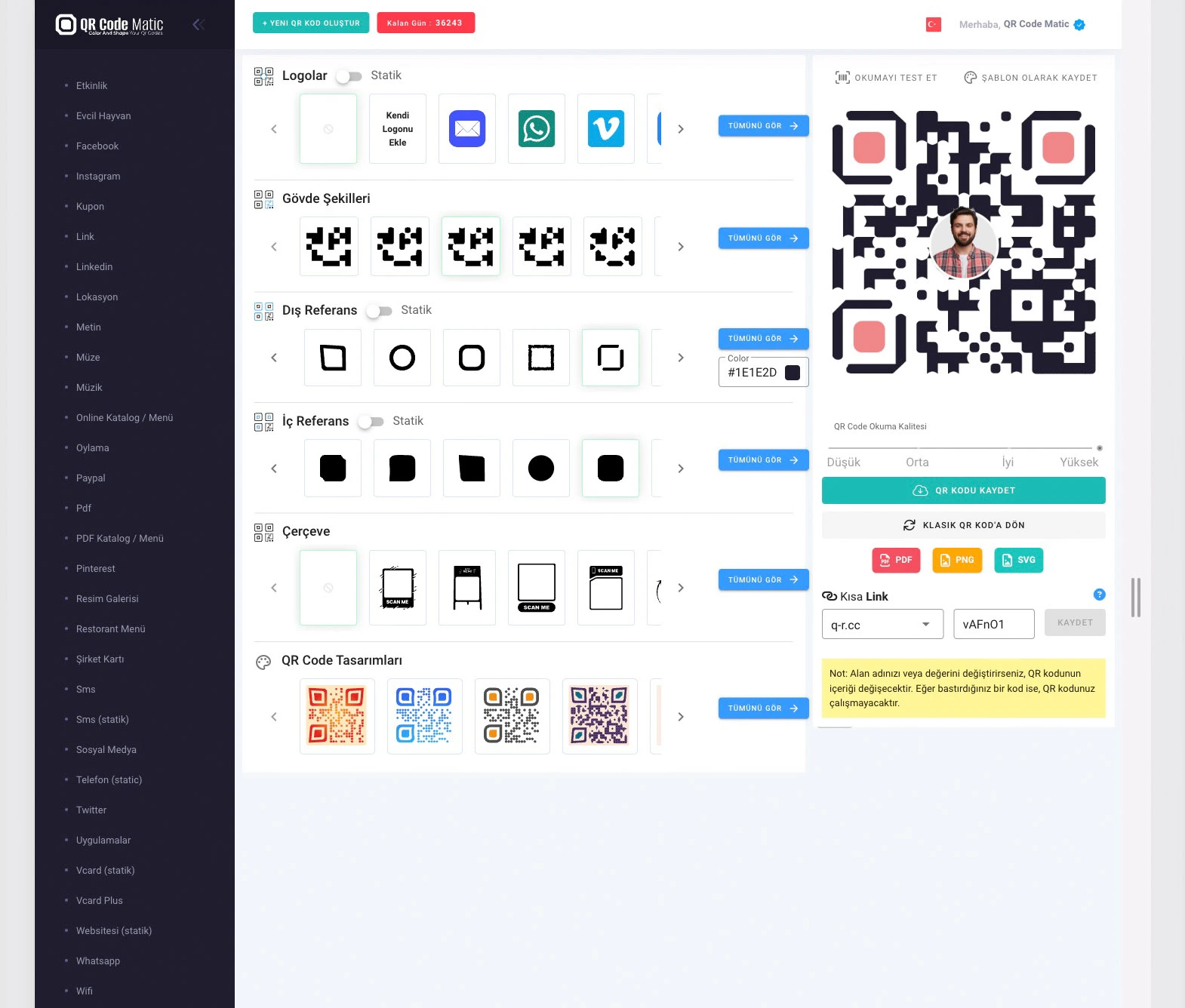QR codes printed on food packages are an effective tool used to provide consumers with detailed information about the content, production, recipe, and more of food products. Here are some of the significant benefits of QR codes used on food packages:
Content Details: QR codes provide consumers with more information about the content of food products. Users who scan the QR code can learn about the list of ingredients, nutritional values, allergen information, and other important content details of the product. This helps consumers make more informed food choices.
Production Process: QR codes provide information about the production process of the food product. By scanning the QR code, users can learn about the production date, processing methods, packaging process, and the traceability features of the product. This provides consumers with confidence that the product is produced safely, with quality and sustainability.
Recipes and Usage Tips: QR codes offer consumers recipes and usage tips related to the product. Users can access delicious recipes, practical usage tips, or recommendations for other foods that complement the product by scanning the QR code. This allows consumers to use the product in more creative and diverse ways.
Nutritional Values and Health Information: QR codes provide consumers with information about the nutritional values and health-related details of the product. Users who scan the QR code can access detailed information about the energy, protein, carbohydrate, fat, vitamins, and mineral content of the product. They can also find information about the compatibility of the product with dietary preferences, allergies, or special nutritional needs.
Sustainability and Source Tracking: QR codes provide consumers with information about the product's sustainability efforts and source tracking. By scanning the QR code, users can learn about the product's environmental impacts, recyclability of the packaging, or the brand's sustainability policies.
Quality Control and Certifications: QR codes provide consumers with information about the product's quality control processes and certifications. Users who scan the QR code can learn about the quality standards the product adheres to, the certifications it has received, or the audits it has undergone. This increases consumer trust and encourages them to choose brands that offer a quality experience.
Manufacturer Information and Story: QR codes provide consumers with information about the product's manufacturer or brand. By scanning the QR code, users can learn about the company's history, mission, values, and interesting details about the production process. This allows consumers to form a stronger connection with the brand and choose a reliable supplier.
Tracking and Feedback: QR codes provide consumers with product tracking and feedback options. Users who scan the QR code can record the product's serial number or production code, track updates about the product, or provide feedback to the manufacturer. This helps consumers resolve product-related issues and increases customer satisfaction.
Food Safety and Hygiene Measures: QR codes provide consumers with information about the product's food safety and hygiene measures. By scanning the QR code, users can learn about the health and safety standards the product complies with and the hygiene measures taken during the production facility. This increases consumer confidence in the product's safety.
Innovation and Research Development: QR codes provide consumers with information about the innovations, new technologies, or research and development activities within the product. By scanning the QR code, users can learn about how the product was developed, the innovations used, or the research it is based on. This strengthens consumers' perception of the brand's innovative and forward-thinking approach.
By integrating QR codes into food packaging, consumers can access more information, enhance security, and improve their experience. Consumers can gain more knowledge about products by scanning QR codes, make food choices that align with their dietary preferences, and make more informed decisions about safe food supply.
Food Traceability: QR codes provide consumers with information about the traceability of the product. By scanning the QR code, users can learn where the product was produced. This alleviates concerns regarding food safety and quality and increases consumers' confidence in the product's reliability.
Natural and Organic Products: QR codes provide information about the certifications of natural and organic food products. By scanning the QR code, users can learn if the product was organically grown, which certifications it has, and the natural processes involved in its production. This enables consumers to choose healthy and natural foods.
Food Safety Warnings: QR codes provide consumers with food safety warnings and information. By scanning the QR code, users can learn about storage conditions, expiration dates, usage instructions, and safety precautions related to the product. This helps minimize the risk of food poisoning or improper use for consumers.
Nutritional and Dietary Suitability: QR codes provide consumers with information about the nutritional value and suitability of the product for specific dietary needs. By scanning the QR code, users can learn about the product's nutritional content, allergen information, and its compatibility with special diets such as vegan or gluten-free.
Social Responsibility and Ethical Information: QR codes provide consumers with information about the product's social responsibility and ethical practices. By scanning the QR code, users can learn if the product contributes to sustainable resource usage, supports fair trade practices, and contributes to social projects. This allows consumers to evaluate brands' societal and environmental responsibilities when making their choices.
Security and Anti-Counterfeiting Measures: QR codes provide consumers with information about product safety and anti-counterfeiting measures. By scanning the QR code, users can verify the authenticity of the product, learn about warnings regarding counterfeit products, and check security features on the packaging. This helps consumers avoid counterfeit products and ensures a secure shopping experience.
Production Region and Farm Information: QR codes provide consumers with information about the product's production region and farm details. By scanning the QR code, users can learn where the product was grown, which farm it came from, and details about the production process. This helps consumers better evaluate the quality and naturalness of the product.
Recycling and Packaging Information: QR codes provide consumers with information about the product's recycling features and packaging. By scanning the QR code, users can learn what material the packaging is made of, recycling symbols, and how to properly dispose of the packaging. This encourages consumers to opt for environmentally friendly products and increases recycling awareness.
Customer Experience and Connection: QR codes offer consumers interactive experiences related to the product and facilitate a closer connection with the brand. By scanning the QR code, users can participate in contests, benefit from discounts, leave comments about the product, or get in touch with the brand.
By appearing on food packages, QR codes provide consumers with detailed information about the content, production, recipes, and more. This information helps consumers make informed choices about healthy and safe food, find products suitable for their dietary preferences, and evaluate brands' social responsibility and ethical practices. Additionally, QR codes enhance transparency in the production process, enable food traceability, combat counterfeiting, and support consumers in building stronger connections with brands. The use of QR codes encourages conscious shopping, prompts questioning of food safety and quality standards, and enriches consumers' overall food experience.
